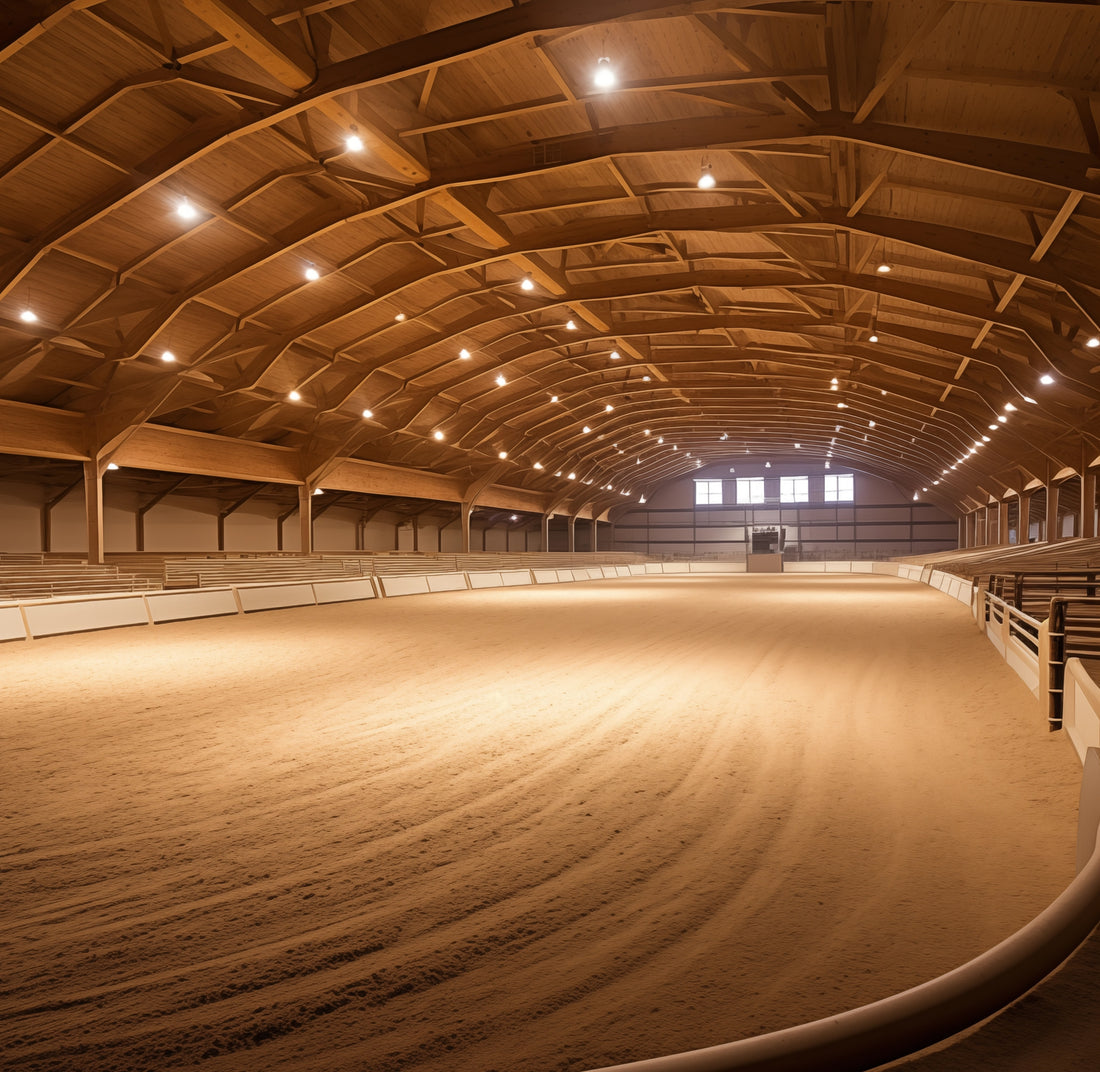Top Ten Tips for Building An Indoor Riding Arena
Avoid These Common Mistakes
I've talked with over a thousand horse arena owners in the last 17 years.
Below is a summary of common mistakes
- Base Fill is expensive. Take elevations of the arena site to determine the amount of fill required to form a base.
- Use a vibrating roller to fully compact the base material. It should be “rock hard” to avoid mixing with the loose footing on top. Consult experienced arena contractor for best local material.
- A 2-foot roof overhang will help keep accumulated water and melted snow roof run off from infiltrating under side walls.
- A French drain along the long walls will divert water from the arena. Determine if natural drain low point areas around the building also need tile.
- When selecting loose footing, consult experienced arena contractors to get the right sand. Avoid adding organic material like sawdust, wood chips, topsoil, hog fuel, bark. When it breaks down, the organic dust is highly absorbent of moisture and will create an unnecessary dust control problem.
- Add finish footing slowly. It’s easier to add than take out. Most general-purpose arenas need no more than 2.5 to 3 inches of loose footing.
- Choose an experienced horse arena building contractor to build your arena. You are investing tens of thousands of dollars in your building. Don’t hire a contractor with a low price and no experience.
- If adding footing additive like rubber, felt, fiber, etc. consider if it will need additional moisture for dust control.
- Ask your knowledgeable friends and contacts with riding arenas for opinions on your planned arena. They have already made mistakes you do not want to make.
- Before investing heavily in sprinkler systems for dust control, contact me for the advantages of using MAG Flakes for dust control. I have 17 years of experience using and selling MAG all over the U.S.


